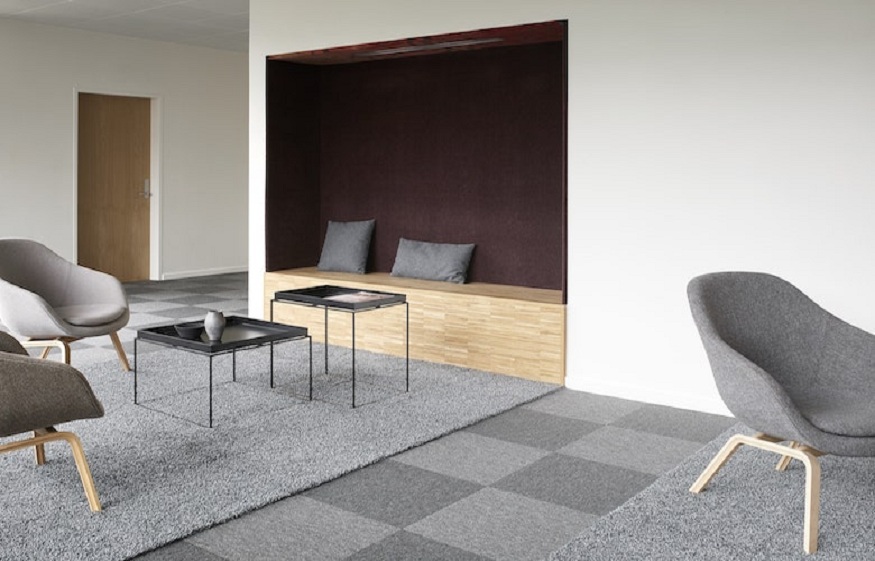Choosing between tiles and carpets for your home can feel like a significant decision. Both options offer unique advantages and drawbacks, and the right choice often depends on factors such as lifestyle, aesthetic preferences, and practical needs. Whether you’re redesigning your home or starting from scratch, understanding the differences between these two popular flooring options can help you make an informed decision that complements your way of life.
The Practicality of Tiles in Modern Homes
Tiles have long been a popular flooring choice, particularly in kitchens, bathrooms, and high-traffic areas. Their durability and ease of maintenance make them an appealing option for busy households. Modern tiles are available in a wide variety of materials, including porcelain, ceramic, marble, and natural stone, each offering distinct benefits for different spaces.
One of the most compelling reasons homeowners choose tiles is their resistance to moisture and stains. In spaces prone to spills or dampness, such as kitchens and bathrooms, tiles provide peace of mind. Unlike carpets, which absorb liquids and can develop stubborn stains, tiles can be wiped clean with minimal effort. This makes them particularly practical for households with young children or pets.
Tiles are also known for their longevity. When properly installed and maintained, high-quality tiles can last for decades. Porcelain tiles, for instance, are highly resistant to cracks, scratches, and wear, making them an excellent long-term investment. In contrast, carpets often show signs of wear more quickly, particularly in high-traffic areas.
The Comfort Factor: Why Carpets Remain Popular
While tiles offer practical benefits, carpets continue to be a popular choice, especially in bedrooms and living rooms. Carpets provide a level of softness and warmth that tiles simply cannot replicate. In colder climates, carpeted floors create a cosy, inviting atmosphere that encourages relaxation.
Carpets also offer better sound insulation than tiles. The soft fibres absorb sound waves, reducing noise levels and creating a quieter, more peaceful home environment. This can be particularly advantageous in multi-storey homes, where carpets can help minimise the noise of footsteps and other household activities.
However, carpets require more maintenance to keep them looking fresh. Dirt, allergens, and dust can become trapped within the fibres, which may pose challenges for individuals with allergies or asthma. Regular vacuuming, professional cleaning, and stain treatments are necessary to maintain their appearance and hygiene.
Aesthetic Appeal: Tiles for Versatility, Carpets for Warmth
The visual impact of flooring should not be overlooked when designing a home. Tiles offer unmatched versatility in terms of design, with endless choices of colours, patterns, sizes, and textures. From sleek, modern porcelain tiles to rustic natural stone, tiles can adapt to virtually any interior style.
The rise of wood-effect tiles has provided homeowners with a way to enjoy the look of timber without the maintenance requirements of natural wood. These tiles replicate the grain and warmth of hardwood flooring while maintaining the durability and water resistance of porcelain or ceramic.
Carpets, on the other hand, contribute warmth and softness to interior spaces. Plush, high-pile carpets can create a luxurious and comfortable feel, while low-pile options offer a more contemporary appearance. The wide range of colours and patterns available makes it easy to find a carpet that complements any décor scheme. However, carpets can sometimes date more quickly than tiles, particularly when bold colours or patterns fall out of fashion.
Temperature and Energy Efficiency Considerations
Temperature regulation is another important consideration when choosing between tiles and carpets. Tiles naturally feel cooler underfoot, which can be a significant advantage in warmer months. In properties with underfloor heating systems, tiles become an efficient conductor of warmth, creating a comfortable surface even during winter.
Carpets, with their insulating properties, help retain heat, making them an excellent choice for bedrooms and living spaces during colder months. Homes in colder regions often benefit from a mix of both materials—tiles in heat-prone areas and carpets where warmth is essential.
Maintenance and Hygiene: Tiles Lead the Way
When it comes to maintenance, tiles have a clear advantage. Their non-porous surfaces make them easy to clean with a simple mop and mild detergent. Ceramic and porcelain tiles are particularly low-maintenance, while natural stone tiles require occasional sealing to maintain their resistance to moisture and stains.
Carpets demand more effort to stay hygienic. Regular vacuuming is essential to remove dirt and allergens, and spills must be cleaned immediately to prevent permanent staining. In households with pets, carpets can trap odours and fur, making frequent cleaning necessary.
Tiles also offer better resistance to allergens. Dust mites, pollen, and pet dander cannot penetrate tile surfaces, making them a healthier option for allergy sufferers. Carpets, despite advancements in hypoallergenic fibres, remain more prone to trapping these particles.
Safety and Accessibility in the Home
Safety is a key factor when choosing flooring, particularly for households with young children, elderly individuals, or individuals with mobility challenges. Tiles can become slippery when wet, posing a potential hazard, especially in bathrooms and kitchens. Textured or non-slip tiles offer a safer alternative in these spaces.
Carpets provide a naturally slip-resistant surface, reducing the risk of falls. In the event of a fall, the soft surface can also minimise the impact, making carpets a safer choice for young children and older adults.
Environmental Impact and Sustainability
The environmental footprint of flooring materials has become a growing concern for many homeowners. Tiles, particularly those made from natural materials like stone or clay, can be an environmentally friendly choice if sourced responsibly. Many manufacturers now offer tiles made from recycled materials, further reducing their environmental impact.
Carpets have historically faced criticism for their environmental impact, particularly when made from synthetic fibres. However, the industry has evolved to include more eco-friendly options, such as carpets made from recycled materials or natural fibres like wool. Both tiles and carpets can be sustainable choices when selected with consideration for material sourcing and manufacturing practices.
Cost and Long-Term Investment
Cost is often a deciding factor when choosing flooring. Tiles generally have a higher initial cost due to the materials and labour involved in installation. However, their durability and low maintenance requirements can make them more cost-effective over time.
Carpets are typically more affordable upfront but may require replacement sooner, especially in high-traffic areas. The costs associated with cleaning, repairs, and potential allergen treatments can also add up over time.
Finding the Right Flooring for Your Lifestyle
The decision between tiles and carpets ultimately depends on your lifestyle, personal preferences, and the specific needs of each room. Households with children or pets may appreciate the easy-to-clean surface of tiles, while those seeking comfort in bedrooms or living spaces might favour carpets.
Many homeowners opt for a combination of both materials to strike a balance between practicality and comfort. Tiles in kitchens, bathrooms, and hallways provide durability where it’s needed most, while carpets in bedrooms and lounges add warmth and softness.
Understanding the characteristics, advantages, and limitations of tiles and carpets helps you make an informed choice that enhances your home’s comfort, functionality, and style.

